The most common problem with indoor gardening and caring for an indoor herb garden is the lack of sunlight. That limits your options as to what herbs you can grow, but don’t to worry.
This article will cover how to grow herbs indoors without sunlight.
I will discuss ten herbs that are perfect for growing indoors. You will get information on the temperature and light requirements for these herbs, how much space each herb needs, and how to successfully grow them indoors.
Why Do Herbs Need Sunlight?
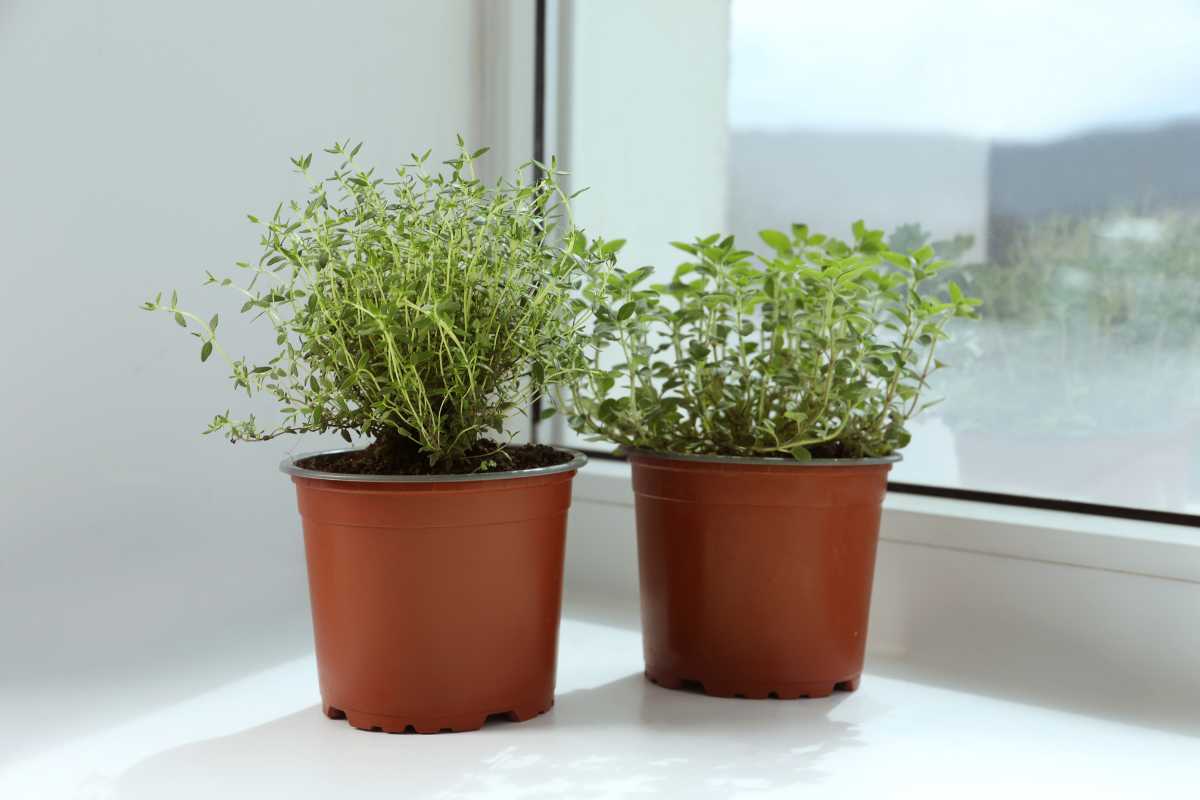
Different plants need different types of light to thrive. Herbs can be classified as shade-loving or sun-loving herbs.
Shade-loving herbs need less light and more moisture. These shade-tolerant herbs are great because they will do well in low-light conditions indoors.
Sun-loving herbs demand a lot of light to grow and go through the process of photosynthesis. For the best plant growth, they need sunny conditions, which can be natural lighting through windows.
For either of these varieties of herbs, if they do not get enough light, seedlings will see leggy growth, with a long thin stem, and probably not survive.
The best way to get enough light on your herbs is by using artificial lights like CFLs and LEDs. These lights have similar spectrums to natural sunlight, so they are perfect for indoor growing. They can provide hours of sunlight per day, even if it’s raining.
Placing these lights at a height between 6 to 12 inches from plants will allow it to flourish with plenty of light and energy to grow fresh herbs.
10 Best Herbs to Grow Indoors in Low Light
These low-light indoor herbs are excellent herbs to grow indoors because they’ll do well with low-light.
1. Parsley
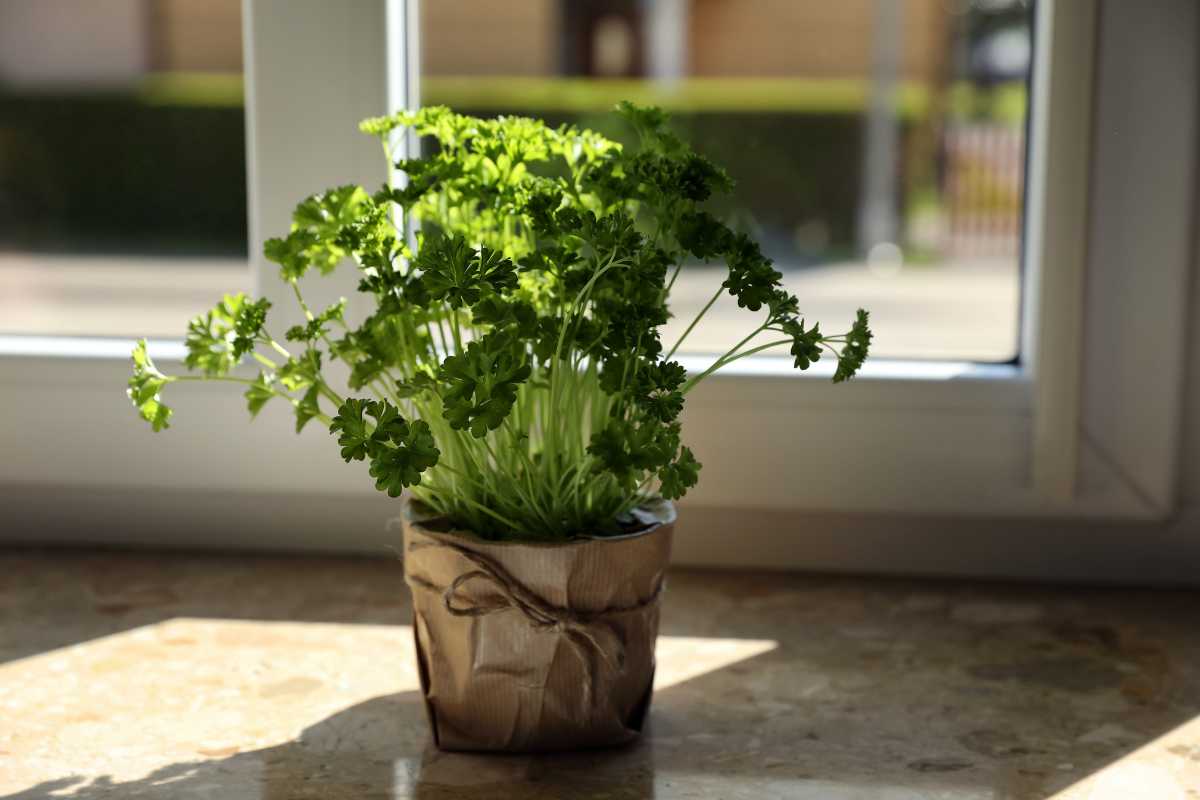
Parsley is a popular herb to grow in low light. It grows best when it gets direct sunlight for 6-8 hours a day, but it also does well with natural light that’s not direct.
The most important thing to remember when growing parsley indoors is they require a lot of water, so be sure to water them often. Soil should be moist, but not soggy.
Parsley also does well with potting soil and just about any type of container as long as it has drainage holes for the excess water.
2. Oregano
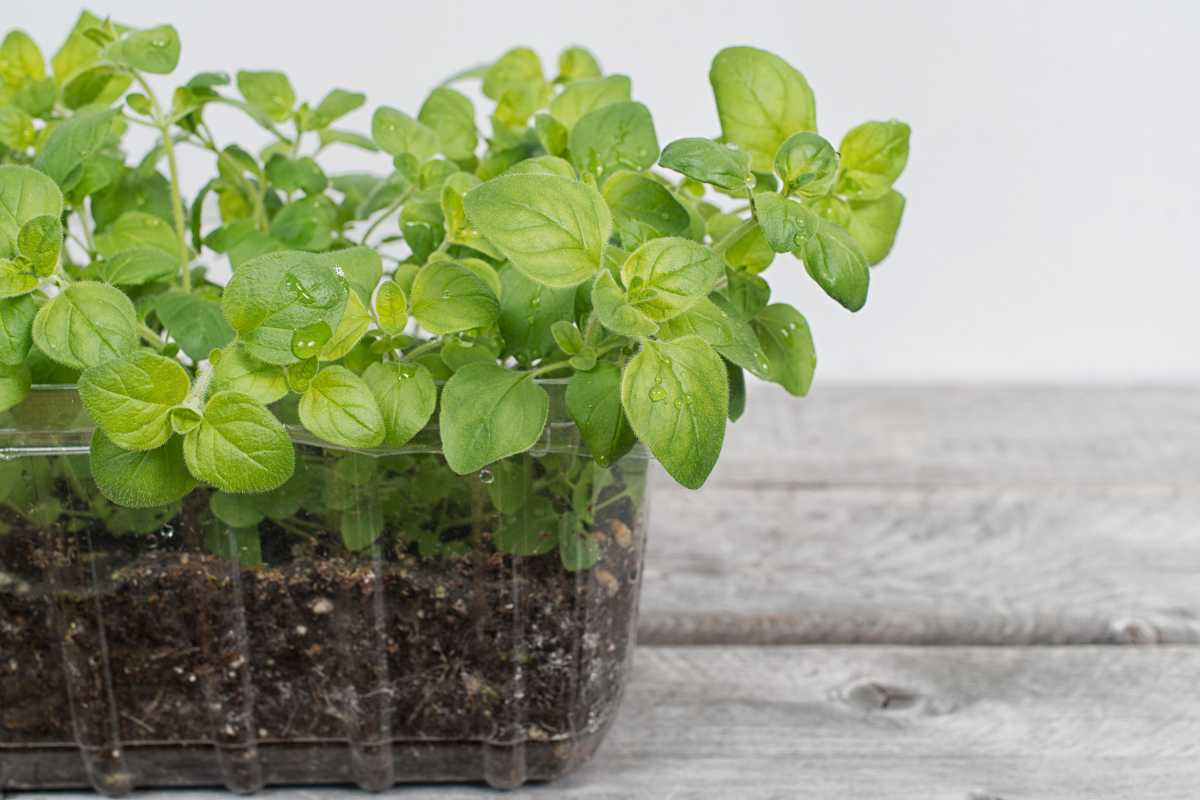
Oregano is a Mediterranean herb that is best grown in dry climates with plenty of natural sunlight.
Oregano loves sunny windowsills, but can also be grown indoors without sun or soil, as long as it is watered daily and gets 8+ hours of bright indirect light each day.
3. Sage
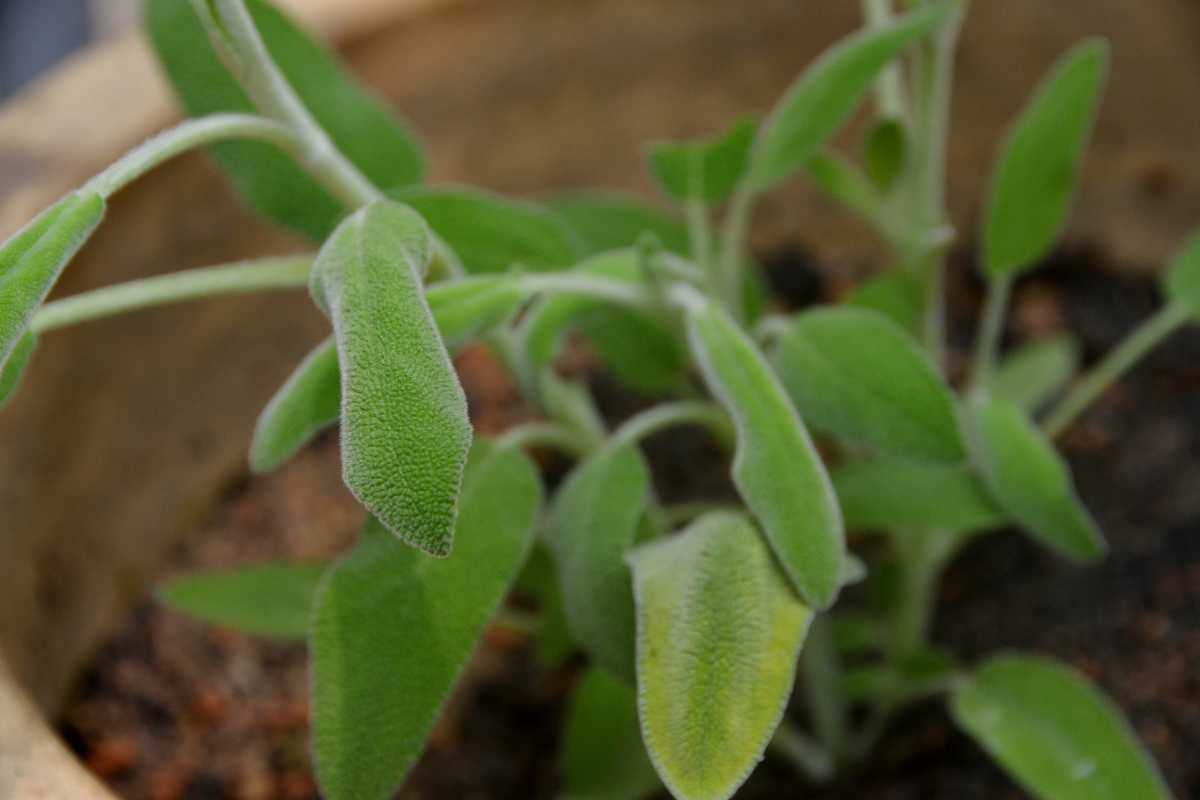
Sage is an easy herb to grow indoors without natural sunlight, because it only requires 6-8 hours of indirect light per day, and water every 3 days or so.
When choosing where to put your sage plants, keep in mind that they will get bigger than other herbs (up to 18 inches high) and need plenty of space. They should grow in a separate container.
4. Chives
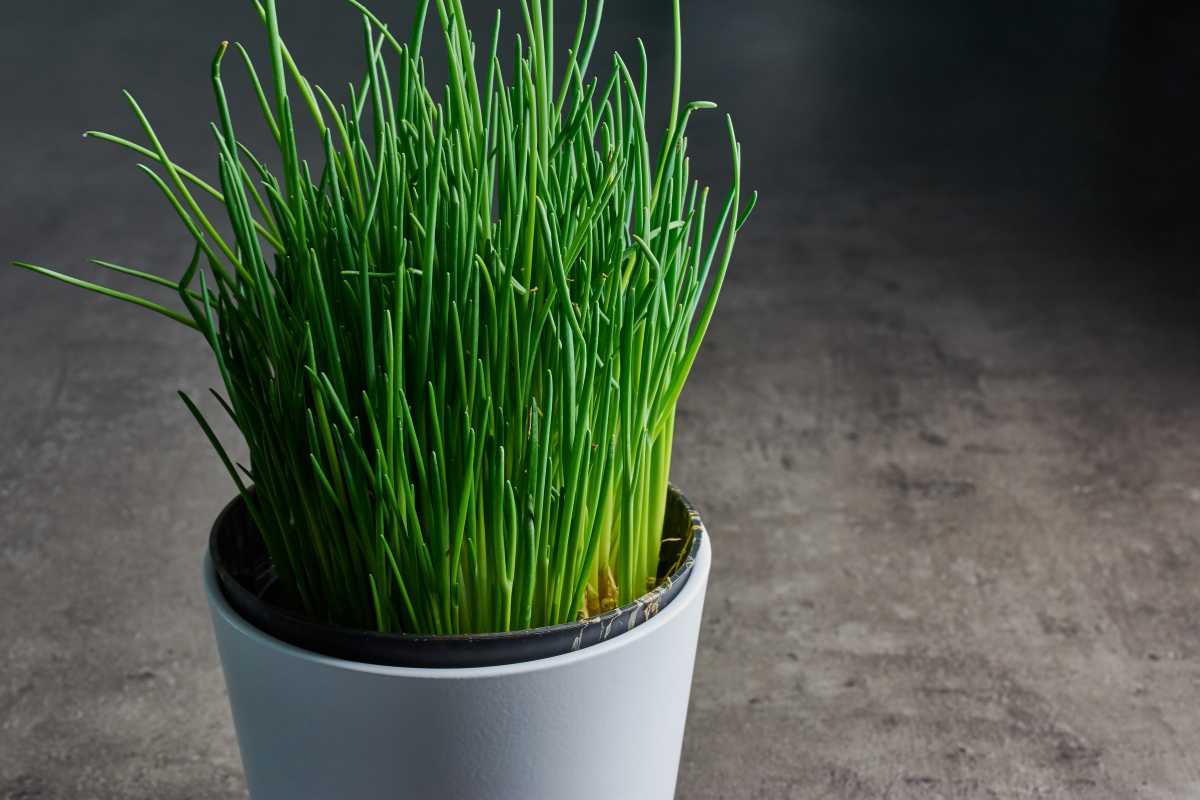
Chives are one of the easiest herbs to grow indoors because they require very little care. They can adapt with cool weather and even indoors without much natural sunlight.
They are a perennial herb and will grow for several years indoors, but will not bloom. When choosing where to plant your chives, keep in mind that they grow best with plenty of light and space to grow to produce their delicious bulbs.
5. Dill
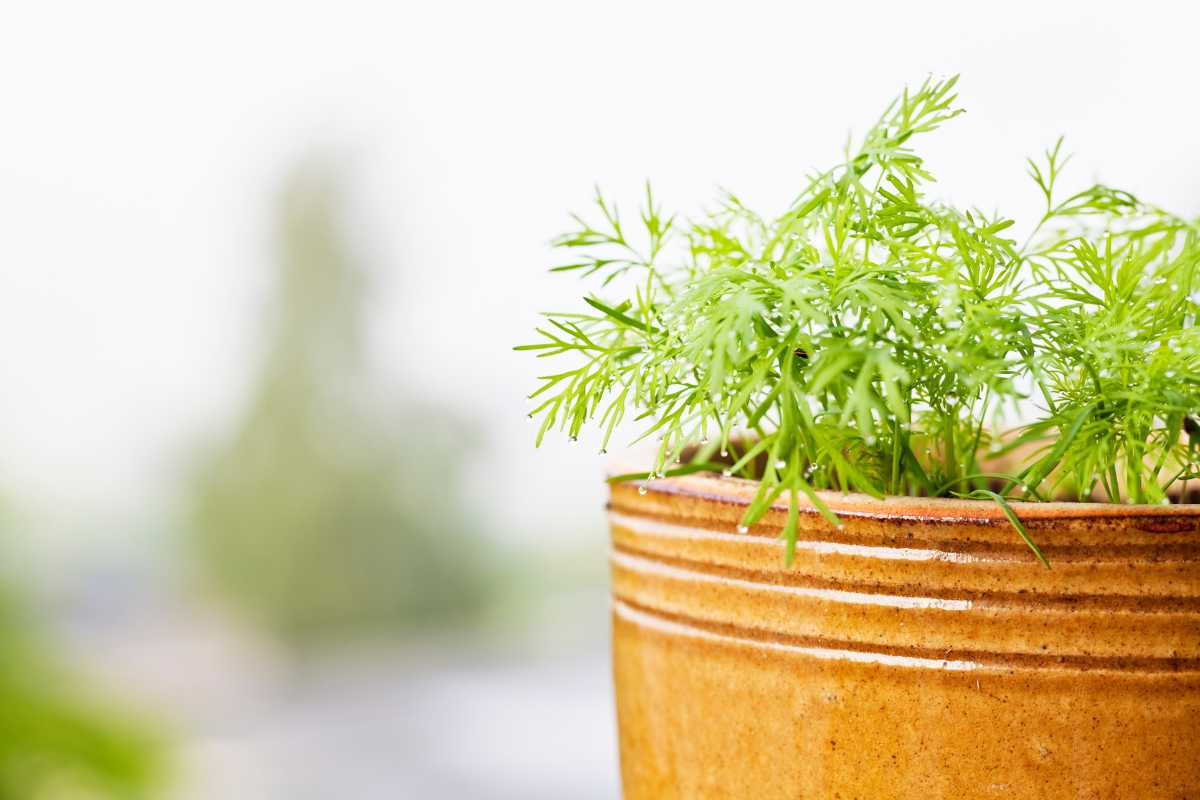
Dill is a perennial herb that prefers cooler temperatures and indirect natural light, as well as moist soil with good drainage. Like all herbs, dill requires plenty of water.
They can be grown indoors or outdoors. It can also be planted outdoors during the summer months if you want it to bloom, but it doesn’t need to bloom to survive indoors in the winter months.
6. Lemon Balm
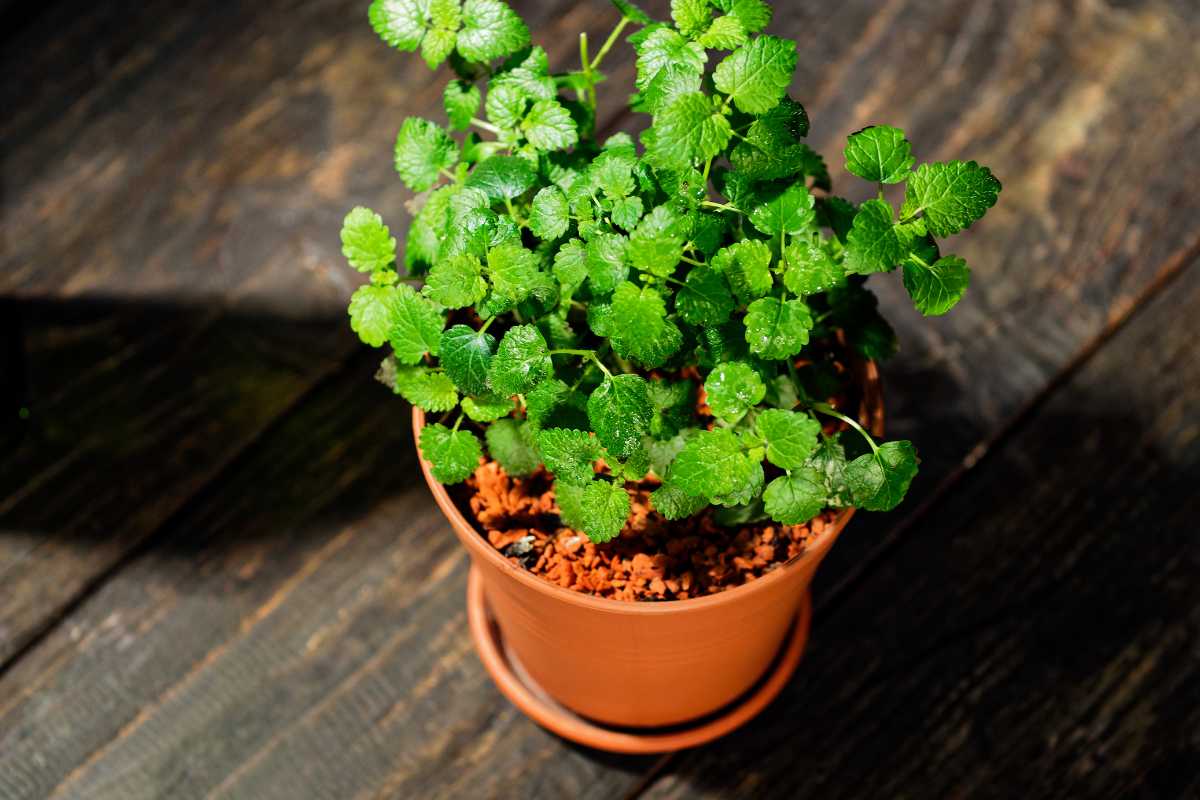
Lemon balm is another perennial herb that likes dry conditions (like most herbs), but also grows best with plenty of direct sunlight (like most annuals).
It grows well indoors during the spring and summer months when the weather is warm enough for it to bloom outdoors or when there is no threat of frost.
7. Mint
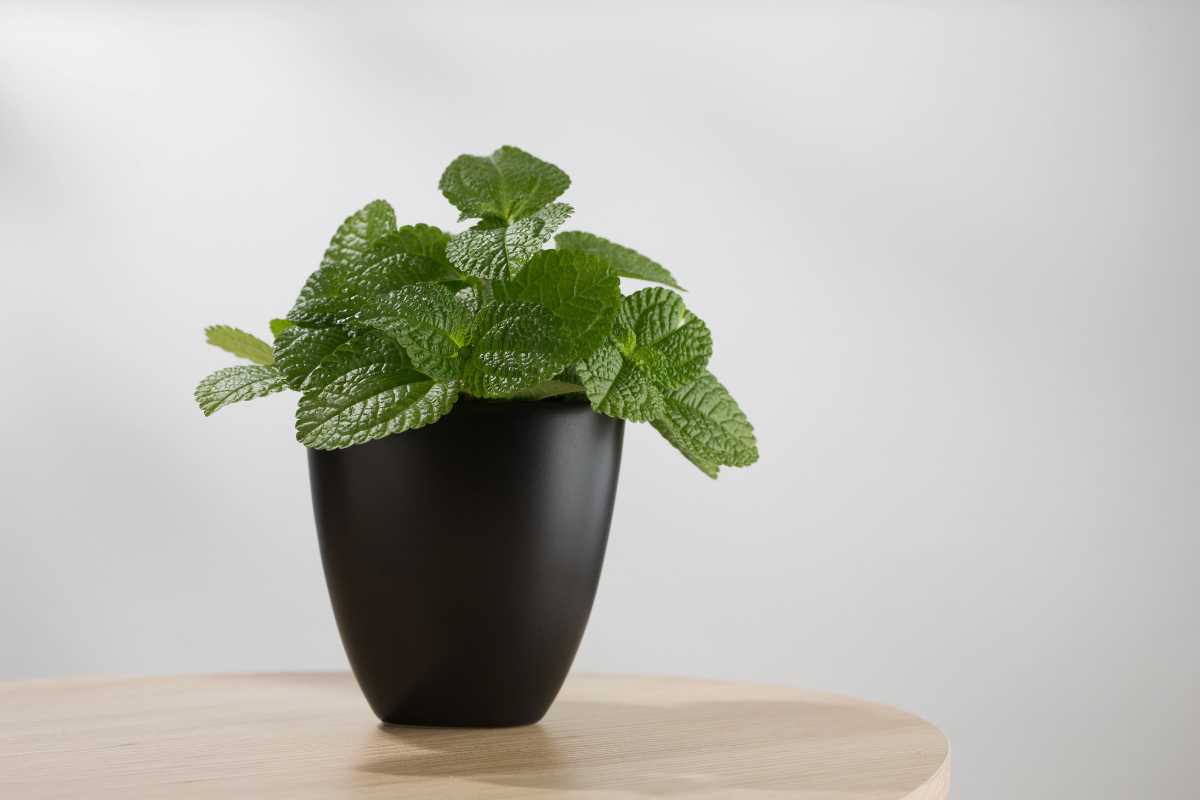
Growing your own fresh mint herbs is great if you love mojitos. Mint is a perennial herb that prefers direct sunlight, but can also do well in partial shade and low-light conditions.
It also requires moist soil and should not be planted near trees or other large plants, as it can cause issues with disease transmission if it is too close to other plants.
Most mint thrives outdoors in the summer months, but some varieties (like spearmint) are better suited for indoor growing indoors during the winter months.
8. Thyme
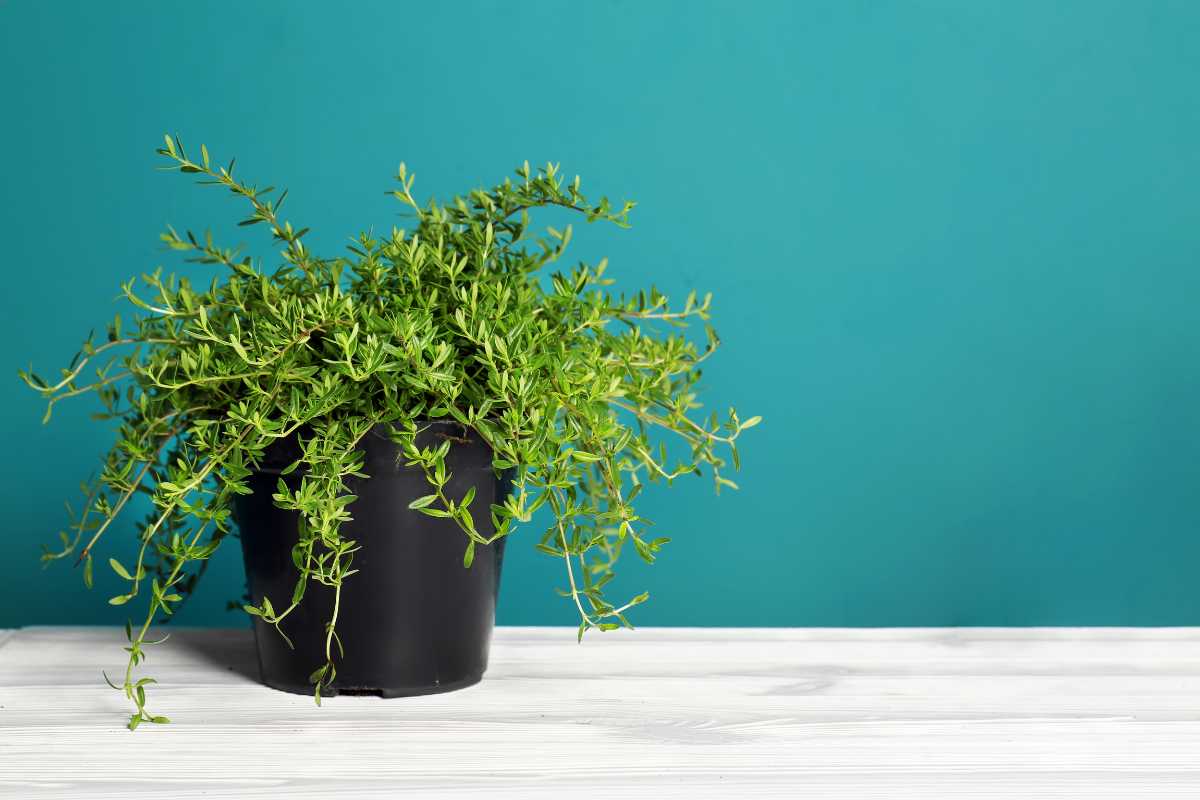
Thyme is another perennial herb that prefers dry soil, so you may want to plant it outdoors in the summer months when there is no threat of frost. The rest of the time, you can grow them indoors
It also needs moist soil and full sunlight to thrive, so you will want to be careful with your thyme if it is too hot or too dry.
9. Rosemary
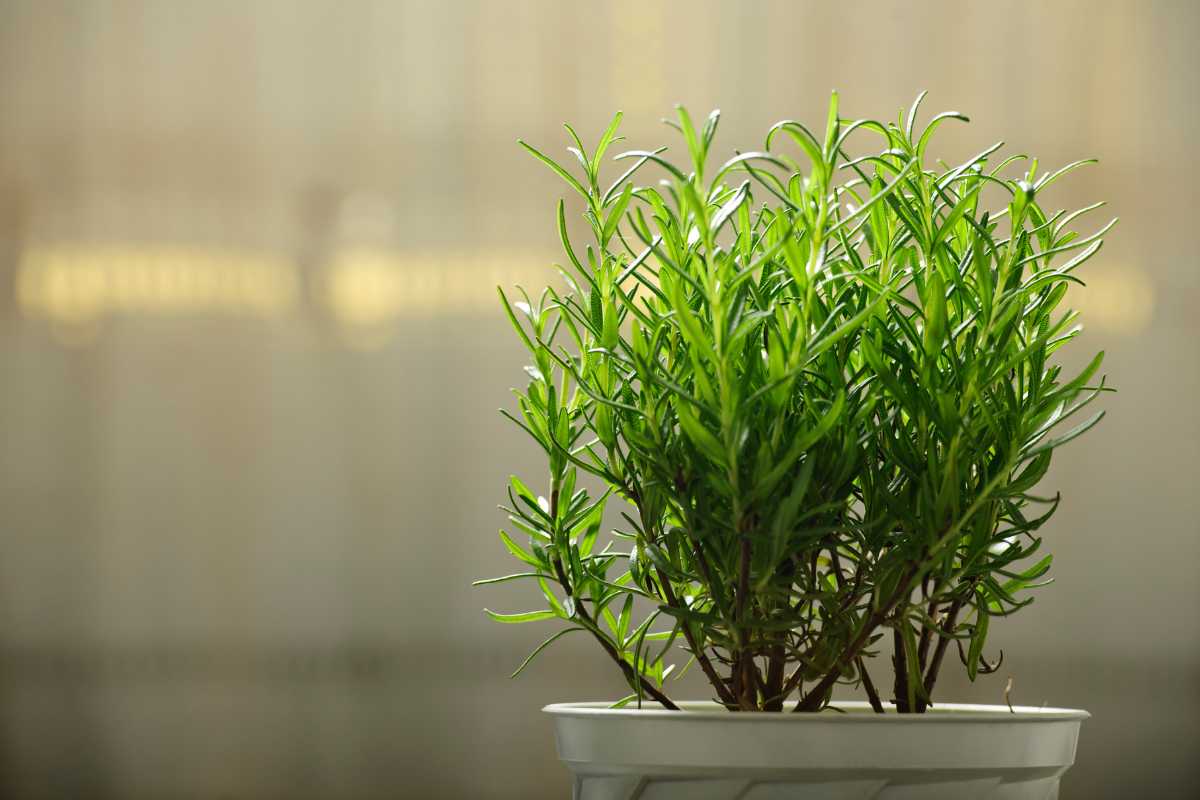
Rosemary likes full, direct sunlight and will do well outdoors if there is no threat of frost, but it can also be grown indoors year-round with moderate light levels. Although some rosemary varieties may not do as well in low light conditions.
Rosemary herbs prefer moist soil conditions and does not like temperatures that are too hot or too cold, so this should be something to keep in mind as well.
10. Lavender
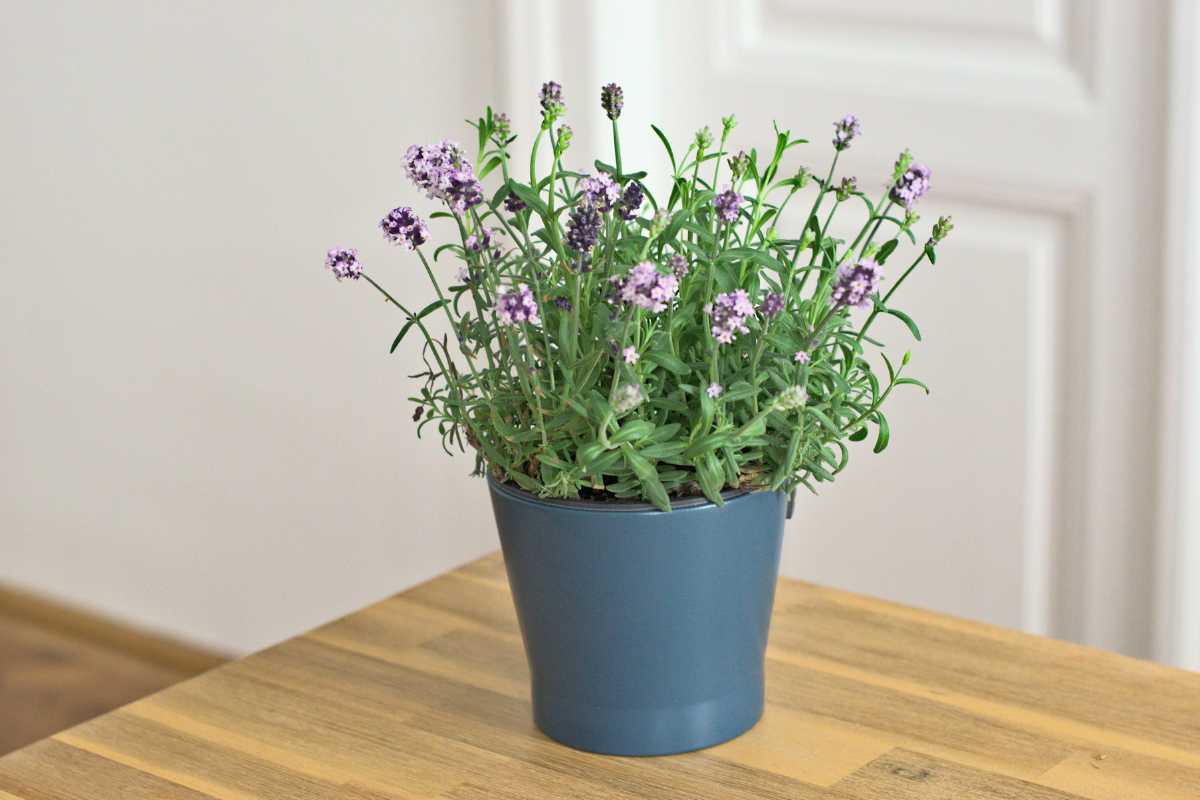
Lavender is another herb that likes moist soil and full sunlight, so it can be grown outdoors in the summer months, but you may want to plant it indoors during the rest of the year.
Indoor temperatures will be more consistent. Lavender likes temperatures that are not too hot or too cold.
Lavender plants prefer soil that is moist but not soggy, so this should be something to keep in mind as well.
Tips on Growing Herbs Indoors without Sunlight
Pots and Containers
The pot you choose should be able to hold the amount of soil needed depending on how many culinary herbs you want to grow.
There are two main types of pots based on materials – plastic post and clay pots:
Plastic pots are lighter, cheaper, and easier to carry around. However, they don’t last as long as clay pots and they can also absorb moisture from the soil.
Clay pots are more expensive, but they last longer than plastic pots.Since clay pots are porous, they also help keep moisture in.
No matter the type of pot you use, excess water needs to drain through the pots or it will lead to root rot. Potted herbs don’t like to stay wet for too long.
Select a pot that has enough drainage holes in it so that excess water can escape easily when you water your herbs.
A small pot will only allow you to grow a few herbs. While a large container will allow you to grow more plants at once, it will be harder for you to move them around (depending on their size).
You can always buy multiple smaller containers instead of one big container if you prefer that option. You can grow varieties of herbs in the same container, but I like to keep the ones with similar growth patterns together.
Grow Lights
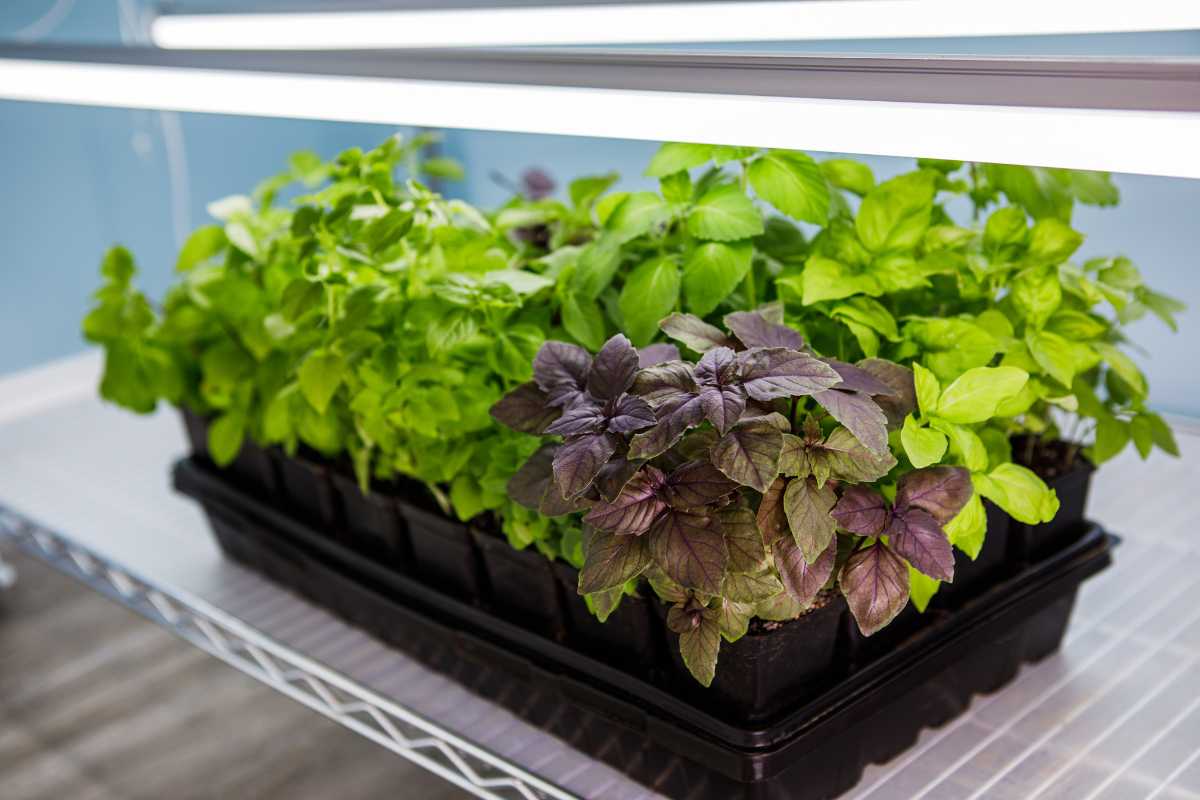
Hanging grow lights are the best if you have a small space and a window, as these lights will fit perfectly above your herbs.
If you don’t have a window, you can use a lamp. There are two types of lamps depending on the types of light bulbs – incandescent and fluorescent:
Incandescent bulbs give off a yellowish light, while fluorescent bulbs are whiter and brighter. Incandescent lamps cost less, but they also burn out faster. Fluorescent lamps cost more, but they last longer, and they don’t heat up as much.
With whichever type of lights you get, you will want to be able to adjust the height of the lights to accommodate how tall your plants are growing. When plants are placed too close to the lights, you risk scorching the leaves.
Grow Tent
If you have a lot of space, you can use a grow tent. These tents are easy to set up and versatile. They can be used indoors and outdoors, depending on the size of the tent that you get. They can also be used for other things, like storage.
Growing in a tent is great because it keeps your plants away from bugs, insects, pests, etc. It will also keep your plants protected from bad weather conditions.
Space Needed Between Plants in an Indoor Herb Garden

When planting your herbs in pots, make sure there’s enough room between each plant. The ideal distance between plants depends on what kind of herb you’re growing. For example, basil likes to grow closely together, while mint grows farther apart.
For an herb garden, you will need around 10 inches of space between each pot.
Watering
When you’re growing herbs indoors, you need to check your plants for watering. Most indoor herbs do not need to be watered daily, but there are those who like plenty of water, like parsley.
The key is to always keep an eye on them and water them as soon as you see that the soil is dry. It is best if you check the soil every day (or at least every other day) to make sure it doesn’t dry out completely. Some herbs will absorb water faster than others.
You can use a watering can or a hose if you have a large garden. Since you’re indoors, a watering can will usually be enough.
If the leaves start to wilt, the soil is probably too dry, and you need to add water immediately.
Fertilizer
When you’re growing indoors, fertilizer can help your herb plants. Depending on which herbs you plan to grow, you may need to fertilize them. Some herbs, like basil, require fertilizer every week. Others, like rosemary, don’t need any extra nutrients.
It’s important to know how often you should fertilize your herbs so that you don’t over-fertilize them. Too much fertilizer could lead to nutrient problems.
Since you’re growing herbs and these are edible plants, you’ll want to use organic fertilizer. Using a natural fertilizer like compost can also help. For some plants, the compost will be enough. For others, you’ll may want to add some fertilizer on top of the soil.
Another good option is using a liquid fertilizer that can easily be added to the water and spread on the soil without harming your plants’ roots.
Soil
You’ll need to use good quality potting soil for your indoor plants. This will ensure that your plants have everything they need to grow faster and stronger.
Ensure it’s well-draining soil, so excess water won’t stay in the pot, resulting in root rot.
If you’re growing your plants in pots, don’t use soil from your garden because it can contain weeds and pests that will harm your plants.
Alternative Ways to Grow Herbs Besides Pots
You can grow herbs without sunlight by using pots, but there are other options. Nowadays, you can buy indoor herb gardens that include all the seeds and soil you need to start growing.
Hydroponics
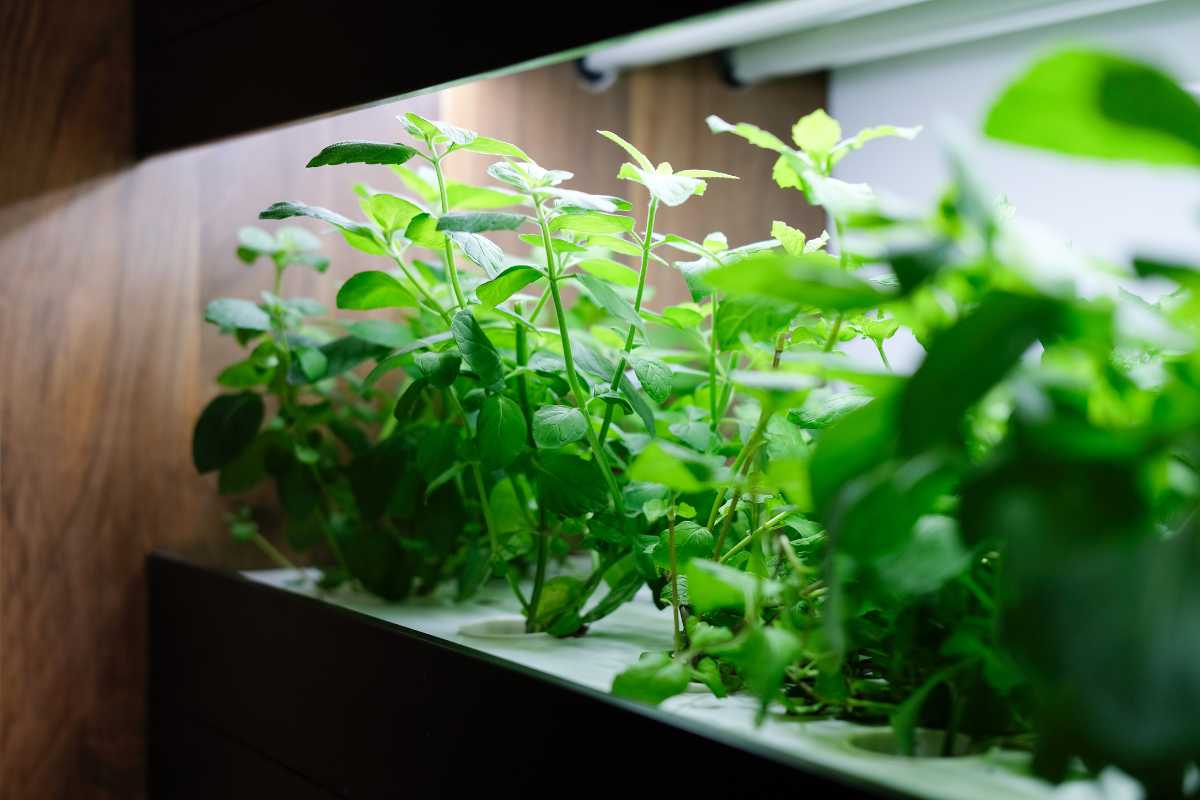
Hydroponics takes place without soil; instead, plants are grown in water (or another liquid) with their roots suspended in the air.
Hydroponic Farming is popular among commercial growers thanks to its ability to be more efficient and prevent the disease from spreading quickly from plant to plant.
There are a number of options to use hydroponics at home, including the popular AeroGarden systems.
AeroGarden Indoor Gardens
These indoor herb gardens come with everything you need to get started right away. They use hydroponics technology on a small scale. They also have a built-in grow lights that help your plants grow even when it’s dark outside.
They also offer different varieties of herbs. You can choose from more than 30 kinds of herbs, including basil, oregano, cilantro, thyme, sage, chives, marjoram, rosemary, and many more.
The AeroGarden is easy to use and doesn’t take up much space.
Learn more about the various AeroGarden models.
Microgreens
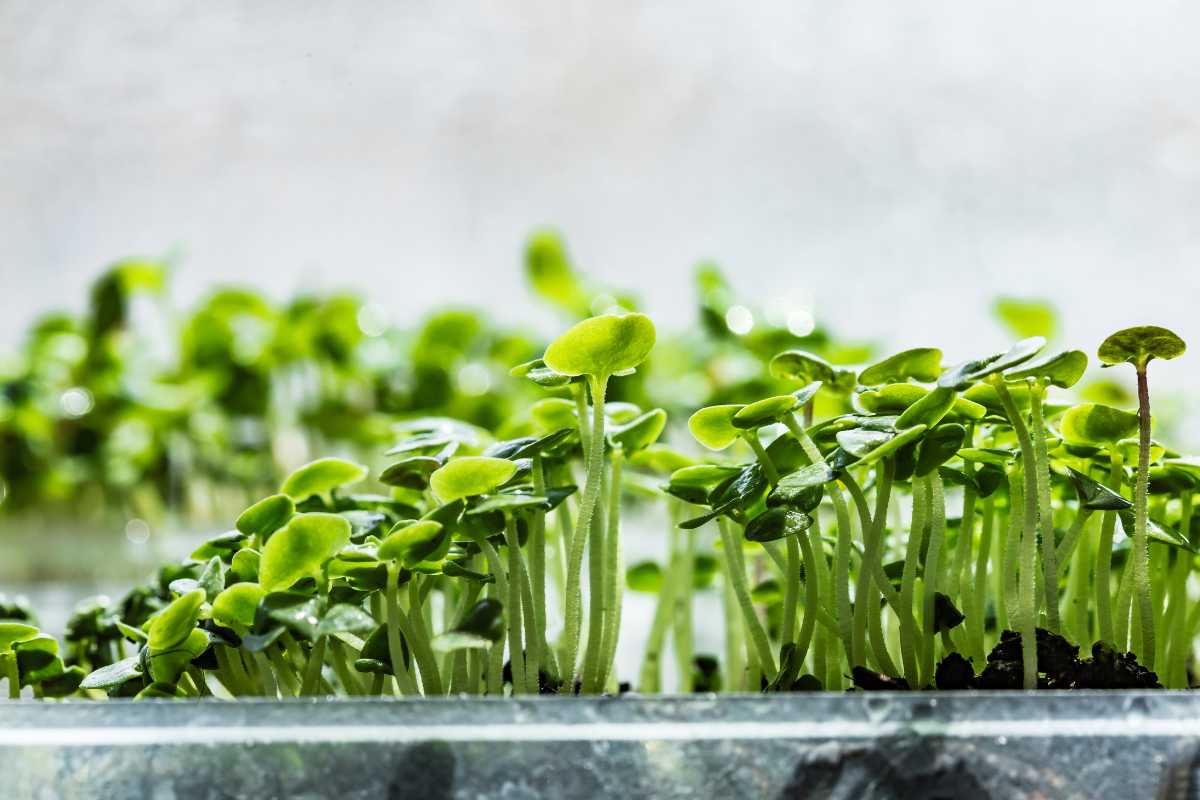
Microgreens are a type of herb that grows in trays or containers with soil or water instead of on top of a traditional garden bed. Microgreens produce leaves rather than roots or bulbs, which means they’re ready for harvest as soon as two weeks after seed planting.
Growing microgreens requires less space, time, and money than traditional gardening methods. Microgreens are sprouts that are harvested before they reach full size.
Unlike regular crops, microgreens don’t need to be planted in rows or beds. Instead, they can simply be grown anywhere. They don’t need sunlight and are perfect for indoor gardening.
To grow microgreens, you just need a shallow container filled with moistened soil. Once the seedlings germinate, you can move them into larger containers as needed.
Growing Herbs Indoors Without Sunlight Final Thoughts
All in all, growing herbs indoors isn’t difficult if you follow these tips. It’s important to know what kind of light your plants require, how to care for them properly, and where to find the best soil.
Once you’ve learned all this, you can start growing herbs indoors without any problems.

